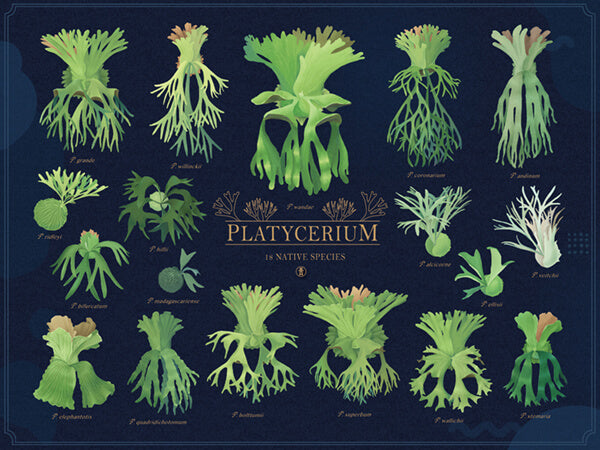
Platycerium: Nature's Living Wall Art
If you've ever wondered what happens when Mother Nature decides to create living antlers, look no further than the Platycerium, better known as the staghorn fern. These remarkable epiphytes have been turning heads and transforming walls into botanical galleries for decades.
What Makes Platycerium Special?
Unlike your typical houseplant that sits politely in a pot, staghorn ferns are rebels of the plant world. In their native habitats across Australia, Africa, and Southeast Asia, they cling to tree trunks and rocks, drawing moisture and nutrients from the air itself. Their distinctive fronds come in two types: the shield fronds that hug their mounting surface like a protective embrace, and the dramatic antler fronds that cascade outward in all their prehistoric glory.
The Perfect Statement Plant
There's something undeniably dramatic about a well-mounted Platycerium. Whether displayed on a wooden plaque, in a hanging basket, or mounted on cork bark, these ferns command attention without being demanding houseguests. They're the strong, silent type of the plant world – impressive to look at but surprisingly low-maintenance once you understand their needs.
Care Made Simple
Despite their exotic appearance, staghorn ferns are more forgiving than you might expect. They prefer bright, indirect light and appreciate a good soaking once a week. The key is mimicking their natural environment: think tropical humidity and good air circulation. A monthly misting and occasional banana peel fertilizer (yes, really!) will keep them thriving.
Why Every Plant Parent Needs One
In a world of fiddle leaf figs and monsteras, the Platycerium stands apart as something truly unique. It's conversation starter, living art, and a connection to ancient plant lineages all rolled into one magnificent specimen. Plus, there's something deeply satisfying about successfully growing a plant that looks like it belongs in a natural history museum.
Ready to add some prehistoric elegance to your space? Your walls are waiting for their antler upgrade.
